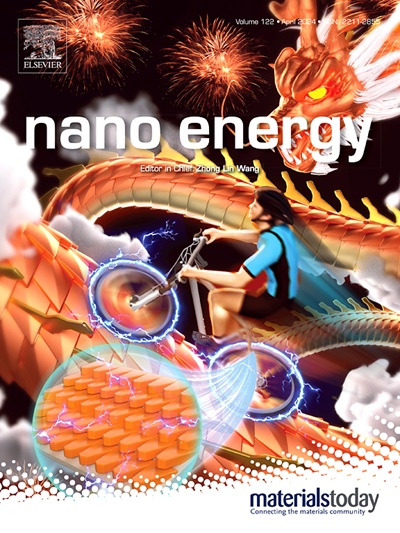Piezotronic strain sensor with uniform and switchable sensitivity by conductivity transformation
IF 16.8
1区 材料科学
Q1 CHEMISTRY, PHYSICAL
引用次数: 0
Abstract
Piezotronic strain sensors that convert mechanical deformation into electrical signals are becoming increasingly important in artificial intelligence, human-machine interfaces, and robotic technologies. These applications require piezotronic sensor with the integration of high-sensitivity, high-stability, and versatile-functionality, which are limited by the single conductivity mechanism. In this study, we propose a piezotronic strain sensor with uniform and switchable sensitivity in a short channel field-effect junction. The strain-induced piezo-potential can be used to switch the conductivity between Schottky and Ohmic regime, leading to an exponential (linear) piezotronic modulation in Schottky (Ohmic) conductivity elucidated by Fermi occupation theory. Local gauge factor reaches a high value of 1330 in Schottky conductivity and a low value of 320 in Ohmic regime, yielding a higher ratio of 4.2. The stable conductivity makes these high and low sensitivity uniform over a wide strain range. This study gives a deep insight into the correlation of strain-sensing performance and conductive mechanism in piezotronic sensors, and offers a new avenue to develop multifunctional and high-sensitivity sensors.

具有均匀和可切换灵敏度的电导率变换压电应变传感器
压电应变传感器将机械变形转化为电信号,在人工智能、人机界面和机器人技术中变得越来越重要。这些应用需要集成高灵敏度、高稳定性和多功能性的压电传感器,而这些都受到单一导电机制的限制。在这项研究中,我们提出了一种在短通道场效应结中具有均匀和可切换灵敏度的压电应变传感器。应变诱导的压电电位可以用来在肖特基和欧姆之间切换电导率,导致费米占据理论解释的肖特基(欧姆)电导率的指数(线性)压电调制。局部规范因子在肖特基电导率下达到高值1330,在欧姆区达到低值320,产生较高的比值4.2。稳定的电导率使这些高灵敏度和低灵敏度在宽应变范围内均匀。该研究深入探讨了压电传感器应变传感性能与导电机理的关系,为开发多功能、高灵敏度传感器提供了新的途径。
本文章由计算机程序翻译,如有差异,请以英文原文为准。
求助全文
约1分钟内获得全文
求助全文
来源期刊

Nano Energy
CHEMISTRY, PHYSICAL-NANOSCIENCE & NANOTECHNOLOGY
CiteScore
30.30
自引率
7.40%
发文量
1207
审稿时长
23 days
期刊介绍:
Nano Energy is a multidisciplinary, rapid-publication forum of original peer-reviewed contributions on the science and engineering of nanomaterials and nanodevices used in all forms of energy harvesting, conversion, storage, utilization and policy. Through its mixture of articles, reviews, communications, research news, and information on key developments, Nano Energy provides a comprehensive coverage of this exciting and dynamic field which joins nanoscience and nanotechnology with energy science. The journal is relevant to all those who are interested in nanomaterials solutions to the energy problem.
Nano Energy publishes original experimental and theoretical research on all aspects of energy-related research which utilizes nanomaterials and nanotechnology. Manuscripts of four types are considered: review articles which inform readers of the latest research and advances in energy science; rapid communications which feature exciting research breakthroughs in the field; full-length articles which report comprehensive research developments; and news and opinions which comment on topical issues or express views on the developments in related fields.
 求助内容:
求助内容: 应助结果提醒方式:
应助结果提醒方式:


